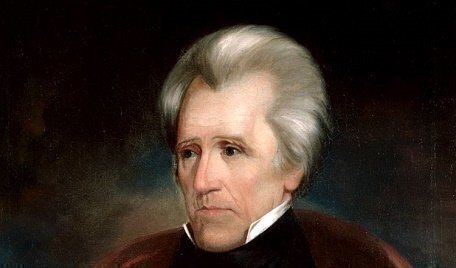On May 21, 1832, a group of delegates supporting President Andrew Jackson met in Baltimore to conduct the first official convention of the Democratic Party, setting some trends that lasted more than a century.

Prior to the elections of 1824 and 1828, political caucuses in Congress usually picked presidential nominees. That practice fell into disfavor as regional candidates sought the presidency outside of the caucus system.
After the bitter contest between Jackson and the former President, John Quincy Adams, in 1828, their supporters started meeting in national conventions to organize for the next presidential election. The first organized convention was held by the now-forgotten Anti-Masonic Party in 1831, held in Baltimore. This briefly-existing third party was slowly destroyed after the murder of William Morgan—a bricklayer who was apparently planning to publish secrets of the Freemasons—led to anti-Masonic sentiment, but it transformed and grew into an anti-Jackson movement. About 110 delegates from 13 states attended the 1831 convention in Baltimore. The convention nominated a presidential candidate (William Wirt) and established a platform – two convention firsts.
Next, another anti-Jackson party, the National Republicans, had their own national meeting in December 1831. Led by Henry Clay, Daniel Webster and former President John Quincy Adams, the party endorsed tariffs and a national bank, and it clearly detested President Jackson. Its convention attracted 155 delegates from 18 states, and was also held in Baltimore in the location of a large saloon. Clay was picked as the party’s presidential nominee while he remained in Washington, D.C. as a newly appointed U.S. Senator.
Jackson’s presidential supporters rallied with their own national meeting the following May. The pro-Jackson supporters decided on an official name for their group: the Democratic Party. The Democratic convention was different in several ways. It had detailed organization rules for conducting ballots. It used electoral votes to decide on the ballots from each state delegation (a practice that remained until 1940). It also had the chair of each state delegation announce its nominees’ names.
The 1832 Democratic convention nominated Jackson to run for a second term, but chose New York’s Martin Van Buren as its candidate for Vice President, instead of the incumbent John C. Calhoun.
In the general election, Jackson easily defeated Clay and Wirt, and their two parties faded away, with the remnants becoming the Whig Party.







